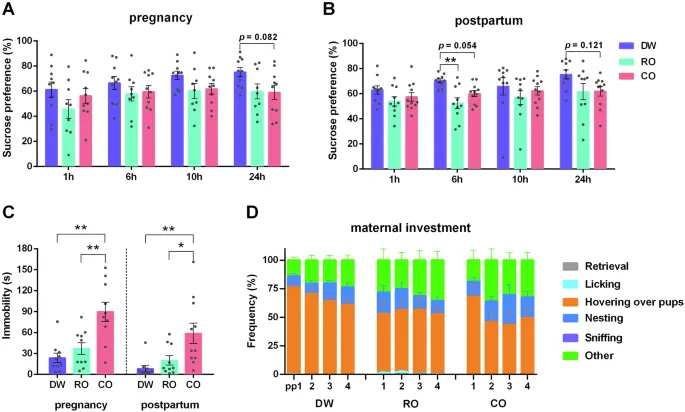
Estonia's Opioid Crisis: A Dark Warning for Britain
2025-09-21
Author: Amelia
In a quiet suburb of Tallinn, a somber reality unfolds daily. Rasmus, a high-functioning opioid addict in his 30s, spends his days meticulously mixing a potent powder with water and searching for veins to inject it. This new drug, laced with dangerous additives, poses a risk of catastrophic vein collapse with just a few doses— a far cry from the days of fentanyl use that he recalls fondly.
Rasmus, once a curious adolescent who experimented with multiple psychoactive substances, turned to opioids as a means to escape overwhelming anxiety and depression. His first experience with fentanyl transformed his life, providing warmth and comfort in a chilling world. Yet, after years of availability, fentanyl has largely vanished from Estonia due to police crackdowns on organized crime. In its place, a more sinister threat has emerged—the designer drugs known as nitazenes, raising alarm bells across Europe.
The Rise of Nitazenes: A European Crisis Looms
Nitazenes are an alarming class of synthetic opioids, statistically more potent than fentanyl. Their grip on Estonia has been tightening, with a staggering 96% of nitazene seizures occurring in the Baltic states. As the drugs wreak havoc on society, Estonia has seen overdose deaths skyrocket, with nitazenes implicated in almost half of all drug-related fatalities.
Rasmus explains the drugs’ perilous potency, cautioning, “Nitazenes are basically the crack of opioids.” Their emergence has not only brought tragedy to Estonia but also serves as a harbinger for a potential opioid crisis in countries like Britain where the drugs have already been linked to over 400 deaths in mere months.
A Complex Problem Rooted in Social Issues
Estonia’s plight highlights that the opioid epidemic isn't merely a matter of drug supply, but stems from deep-seated social issues, including post-Soviet economic challenges and marginalized communities. Despite its image as a modern, technologically advanced society, Estonia’s historical struggles have fostered a robust addiction culture that economic growth alone cannot dismantle.
Katri Abel-Ollo, a researcher focused on nitazenes, warns that countries without prior experiences with potent opioids may be particularly unprepared for this new wave. Estonia was one of the first in Europe to confront a fentanyl crisis, spurred by disrupted drug routes after the Afghanistan invasion.
An Evolving Landscape of Addiction
As law enforcement successfully diminished fentanyl's local availability, old networks dispersed, making way for fragmented nitazene distribution channels, often unbefitting of previous organized crime dynamics. Unfortunately, while nitazenes provide fleeting relief for withdrawal symptoms, they carry unique dangers as they may not respond well to typical overdose interventions like naloxone.
In communities heavily affected by drugs, such as Lasnamäe, addiction has become ingrained due to socioeconomic disparities and decades of marginalization. The Russian-speaking population, once seen as prosperous during the Soviet era, now largely constitutes Estonia's underprivileged demographic, with access to drugs often a coping mechanism amid their struggles.
Policy Implications and the Future
The situation in Estonia serves as a cautionary tale for other nations facing similar potential crises. Experts argue for the importance of treating the epidemic as a public health issue rather than merely a law enforcement one. Strategies to combat addiction must go beyond temporary fixes; they should foster long-term infrastructural shifts to support affected communities.
Rasmus’s attempts to seek help have been thwarted by skyrocketing costs of treatment due to government funding cuts, leaving many like him hopeless. “Most likely dead,” he shares ominously when asked about his future.
As the West grapples with its own opioid crisis, lessons from Estonia's turmoil reveal the urgent need for comprehensive drug policy reform. If ignored, the specter of nitazenes could manifest into a catastrophe on a much larger scale, breeding despair in communities already suffering.









 Brasil (PT)
Brasil (PT)
 Canada (EN)
Canada (EN)
 Chile (ES)
Chile (ES)
 Česko (CS)
Česko (CS)
 대한민국 (KO)
대한민국 (KO)
 España (ES)
España (ES)
 France (FR)
France (FR)
 Hong Kong (EN)
Hong Kong (EN)
 Italia (IT)
Italia (IT)
 日本 (JA)
日本 (JA)
 Magyarország (HU)
Magyarország (HU)
 Norge (NO)
Norge (NO)
 Polska (PL)
Polska (PL)
 Schweiz (DE)
Schweiz (DE)
 Singapore (EN)
Singapore (EN)
 Sverige (SV)
Sverige (SV)
 Suomi (FI)
Suomi (FI)
 Türkiye (TR)
Türkiye (TR)
 الإمارات العربية المتحدة (AR)
الإمارات العربية المتحدة (AR)